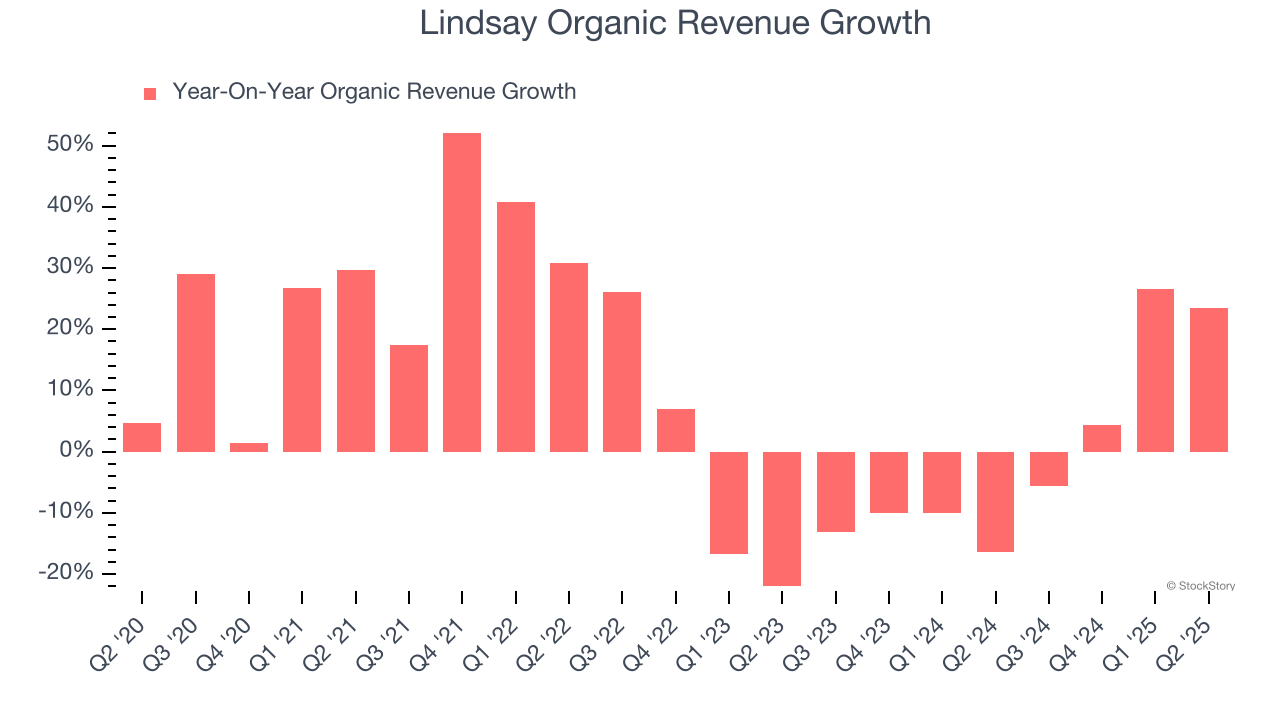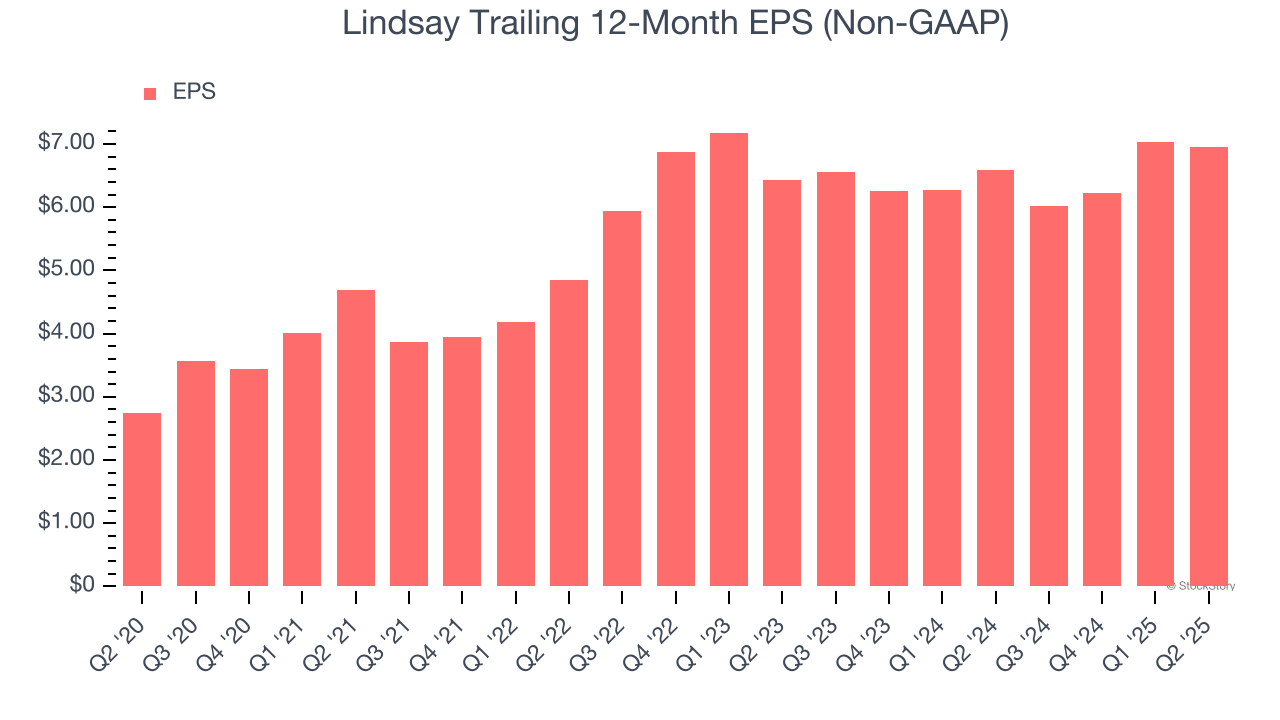
Lindsay has been treading water for the past six months, recording a small return of 2% while holding steady at $132.72.
Is there a buying opportunity in Lindsay, or does it present a risk to your portfolio? Get the full stock story straight from our expert analysts, it’s free.
Why Is Lindsay Not Exciting?
We're sitting this one out for now. Here are three reasons why LNN doesn't excite us and a stock we'd rather own.
1. Core Business Falling Behind as Demand Plateaus
Investors interested in Agricultural Machinery companies should track organic revenue in addition to reported revenue. This metric gives visibility into Lindsay’s core business because it excludes one-time events such as mergers, acquisitions, and divestitures along with foreign currency fluctuations - non-fundamental factors that can manipulate the income statement.
Over the last two years, Lindsay failed to grow its organic revenue. This performance was underwhelming and implies it may need to improve its products, pricing, or go-to-market strategy. It also suggests Lindsay might have to lean into acquisitions to accelerate growth, which isn’t ideal because M&A can be expensive and risky (integrations often disrupt focus). 
2. Revenue Projections Show Stormy Skies Ahead
Forecasted revenues by Wall Street analysts signal a company’s potential. Predictions may not always be accurate, but accelerating growth typically boosts valuation multiples and stock prices while slowing growth does the opposite.
Over the next 12 months, sell-side analysts expect Lindsay’s revenue to drop by 2.6%, close to its 8.6% annualized growth for the past five years. This projection is underwhelming and indicates its newer products and services will not accelerate its top-line performance yet.
3. Recent EPS Growth Below Our Standards
Although long-term earnings trends give us the big picture, we like to analyze EPS over a shorter period to see if we are missing a change in the business.
Lindsay’s EPS grew at an unimpressive 4% compounded annual growth rate over the last two years. On the bright side, this performance was higher than its 1.4% annualized revenue declines and tells us management adapted its cost structure in response to a challenging demand environment.

Final Judgment
Lindsay isn’t a terrible business, but it isn’t one of our picks. That said, the stock currently trades at 21.2× forward P/E (or $132.72 per share). This valuation tells us it’s a bit of a market darling with a lot of good news priced in - we think there are better opportunities elsewhere. Let us point you toward a dominant Aerospace business that has perfected its M&A strategy.
Stocks We Would Buy Instead of Lindsay
When Trump unveiled his aggressive tariff plan in April 2024, markets tanked as investors feared a full-blown trade war. But those who panicked and sold missed the subsequent rebound that’s already erased most losses.
Don’t let fear keep you from great opportunities and take a look at Top 5 Growth Stocks for this month. This is a curated list of our High Quality stocks that have generated a market-beating return of 183% over the last five years (as of March 31st 2025).
Stocks that made our list in 2020 include now familiar names such as Nvidia (+1,545% between March 2020 and March 2025) as well as under-the-radar businesses like the once-small-cap company Exlservice (+354% five-year return). Find your next big winner with StockStory today.
StockStory is growing and hiring equity analyst and marketing roles. Are you a 0 to 1 builder passionate about the markets and AI? See the open roles here.






